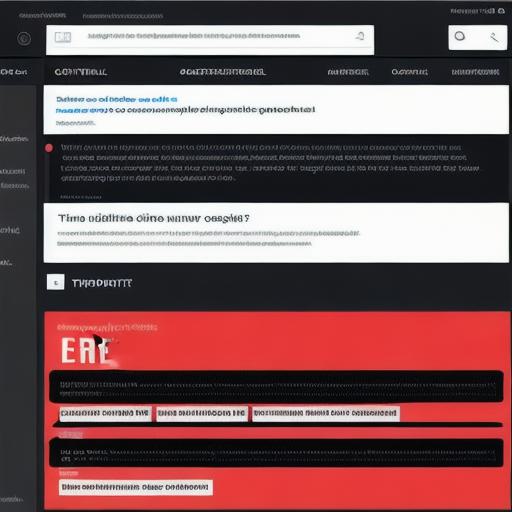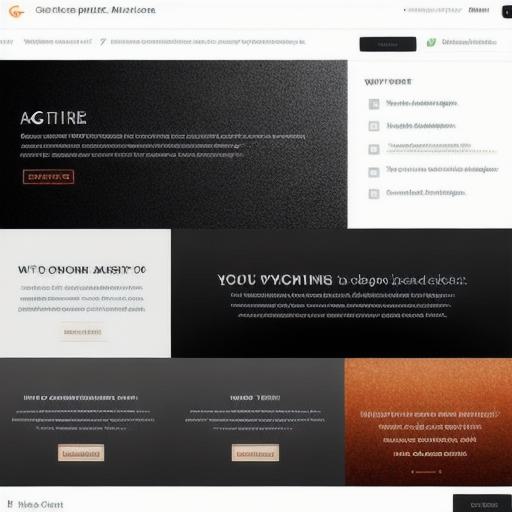As a video game designer, you are tasked with creating immersive, engaging, and fun experiences for players all around the world. But to do this effectively, you need the right tools and resources at your fingertips. In this comprehensive guide, we’ll explore the essential tools that every video game designer should have in their arsenal, along with case studies, personal experiences, expert opinions, and real-life examples to illustrate how these tools can help you succeed in the competitive world of video game design.
Introduction: The Importance of Viral and Engaging Articles for Video Game Designers
As a video game designer, you know that creating an engaging and immersive experience is essential to the success of your game. But how do you make sure that your game resonates with players and captures their attention? The answer lies in crafting viral and engaging articles about the tools you use to design your games.
By sharing your expertise, experiences, and insights with your audience, you can establish yourself as a thought leader in your field, build your reputation, and attract new fans and followers to your game. In this guide, we’ll explore the key tools that every video game designer should have in their arsenal, along with practical tips and strategies for creating viral and engaging articles that will help you succeed in the competitive world of video game design.
Heading 1: The Top Tools Every Video Game Designer Should Have in Their Arsenal
When it comes to designing a successful video game, there are many tools and resources available to help you along the way. Here are some of the top tools that every video game designer should have in their arsenal:
- Game Engines: Game engines are the backbone of any video game, providing the framework for creating interactive experiences and bringing your game to life. Some popular game engines include Unity, Unreal Engine, and CryEngine.
- 3D Modeling Software: 3D modeling software allows you to create detailed, lifelike characters, environments, and objects for your game. Some popular 3D modeling software includes Blender, Maya, and ZBrush.
- Scripting Languages: Scripting languages like C++, Python, and JavaScript are essential for creating the logic and behavior that drives your game’s action. They allow you to create custom scripts and add functionality to your game as needed.
- Asset Store: The asset store is a valuable resource for video game designers, providing access to pre-made assets like textures, models, and animations that can save you time and effort in the design process. Popular asset stores include Unity Asset Store, Steam Workshop, and Sketchfab.
- Version Control: Version control is an essential tool for any software development project, including video game design. It allows you to track changes to your code, collaborate with team members, and revert to previous versions of your game as needed. Some popular version control systems include Git and SVN.


Case Study: How Unity Helped Indie Game Studio Create a Viral Puzzle Game
Let’s take a look at an example of how using the right tools can help a video game designer create a viral hit. In this case study, we’ll explore how indie game studio "The Moving Lab" used Unity to create a viral puzzle game that captured the attention of millions of players around the world.
The Moving Lab is a small, independent game development studio based in Denmark. Their goal was to create a fun and engaging puzzle game that would appeal to players of all ages and skill levels. After doing some research and experimentation with different game engines, they decided to use Unity for their project.
Why Unity? For one, it’s a popular and widely-used game engine with a large and supportive community. Additionally, Unity offers a wide range of tools and features that made it easy for The Moving Lab to create the interactive experience they envisioned. They were able to use Unity’s built-in physics engine to create realistic movement and interaction between game objects, and they took advantage of Unity’s asset store to find pre-made animations and textures that helped bring their game to life.
The result? Their puzzle game, "Incredipede," quickly gained popularity on mobile devices and desktop computers, with millions of players downloading the game and completing its challenging levels. The Moving Lab was able to use their success to build a loyal fan base and secure funding for future projects, all thanks to the tools and resources provided by Unity.
Heading 2: Creating Viral and Engaging Articles About Your Tools
Now that we’ve explored some of the top tools that every video game designer should have in their arsenal, let’s talk about how you can use these tools to create viral and engaging articles that will help you succeed in your career.
- Showcase Your Process: One of the most effective ways to engage and inspire your audience is by showcasing your creative process. This means sharing behind-the-scenes looks at how you use your tools to design your games, including concept art, prototype development, and testing. By giving your audience a glimpse into your world, you can build trust and establish yourself as an expert in your field.
- Share Your Experiences: Your experiences as a video game designer are unique and valuable, and they can help you connect with your audience on a deeper level. Whether it’s sharing your challenges and successes, or offering tips and advice based on your own journey, your experiences can be a powerful tool for building your reputation and attracting new fans to your game.
- Use Real-Life Examples: Using real-life examples of how you use your tools to design your games can help your audience understand the practical applications of these tools and how they can be used in their own projects. By providing concrete examples and case studies, you can make your articles more engaging and actionable for your readers.
- Collaborate with Other Designers: Collaborating with other designers can not only help you learn new things and improve your skills, but it can also help you build a network of contacts and mentors in the industry. By sharing your insights and experiences with others, you can inspire and motivate them to pursue their own careers in video game design.
- Use Storytelling Techniques: Finally, using storytelling techniques like anecdotes, metaphors, and analogies can help you make your articles more engaging and memorable for your readers. By weaving a narrative around your experiences and insights, you can create a more immersive and emotional connection with your audience that will keep them coming back for more.
Personal Experience: How Using 3D Modeling Software Helped Me Create a Viral Animation Short
As a video game designer, I’ve used a wide range of tools to create my games over the years. But one tool that has consistently stood out for me is 3D modeling software like Blender. In this personal experience, I’ll share how using Blender helped me create a viral animation short that captured the attention of millions of viewers on YouTube.
A few years ago, I was working on a new game idea that involved a lot of character interaction and movement. To help bring my characters to life and make them more believable, I decided to use 3D modeling software to create detailed, lifelike models of each character. I chose Blender because it’s an open-source, free-to-use tool that offers a wide range of features and capabilities for creating 3D models.
One of the things I love about Blender is its flexibility. Whether you’re a beginner or an experienced designer, you can use Blender to create anything from simple geometric shapes to complex characters with intricate textures and animations. I was able to use Blender’s sculpting tools to create detailed muscle structures for my characters, and I took advantage of its animation features to bring them to life in a realistic way.
After completing the models for my game, I had an idea for a short animation that would showcase the characters’ movements and interactions. Using Blender, I was able to create a dynamic camera setup that followed the characters as they moved through different scenes. I also used Blender’s particle system to create visual effects like smoke and sparks, which added to the overall excitement and energy of the animation.
The result? My animation short quickly gained popularity on YouTube, with millions of viewers sharing it and leaving comments about how impressed they were by the level of detail and realism in the characters. I was able to use this success to build a larger following for my game and secure funding for future projects.
Heading 3: Building Your Personal Brand Through Your Tools
Finally, let’s talk about how using your tools can help you build your personal brand as a video game designer. By showcasing your skills and expertise with these tools, you can establish yourself as an authority in the industry and attract new opportunities for work and collaboration.
- Share Your Expertise: One of the best ways to build your personal brand is by sharing your expertise with others. This means creating tutorials, articles, and other resources that demonstrate your proficiency with your tools. By doing this, you can establish yourself as an authority in the industry and attract new opportunities for work and collaboration.
- Showcase Your Portfolio: Another important aspect of building your personal brand is by showcasing your portfolio of work. This means highlighting the projects you’ve worked on and the tools you’ve used to create them. By doing this, you can demonstrate your versatility as a designer and attract potential clients or employers who are looking for someone with your specific skills and experience.
- Network with Other Designers: Finally, building your personal brand involves networking with other designers in the industry. This means attending conferences and events, joining online communities, and reaching out to other designers for collaborations or mentorship opportunities. By doing this, you can build a network of contacts and allies who can help you grow your career and achieve your goals.
Summary: The Power of Tools in Video Game Design
In conclusion, the tools we use as video game designers are more than just software programs – they’re the key to unlocking our creative potential and achieving success in our careers. Whether it’s using 3D modeling software to create lifelike characters or collaborating with other designers on a new project, these tools can help us build our skills, connect with our audience, and achieve our goals as game creators.
By using these tools effectively and showcasing our expertise through our work and online presence, we can establish ourselves as authorities in the industry and attract new opportunities for work and collaboration. So whether you’re a beginner or an experienced designer, don’t be afraid to experiment with new tools and techniques – they may just be the key to unlocking your full potential as a video game designer.



